Today in Jerusalem I took advantage of the cool morning air to hike to the top of the Mount of Olives.
 |
| Looking up toward Temple Mount from the Mount of Olives |
After a light Israeli breakfast my journey began by turning right out of the door at the Abraham Hostel.
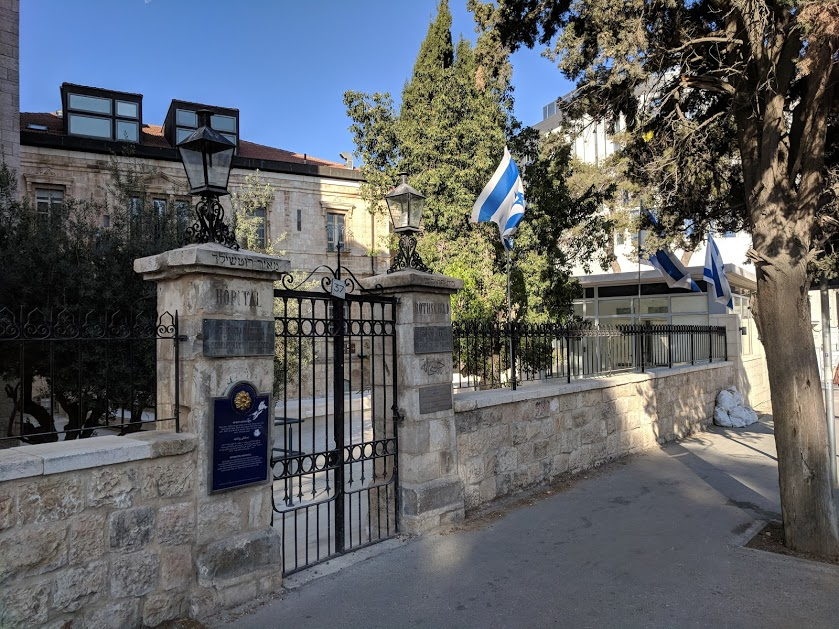 |
| Rothschild Hospital in Jerusalem |
I walked down HaNevi’im Street, or the street of the Prophets.
 |
| An Italian Hospital, now Israel Ministry of Education in Jerusalem |
There are many interesting old buildings from the British era and before.
 |
| Shops near the Damascus Gate |
I turned onto Sultan Suleiman Street, where I saw several markets selling fresh food.
 |
| Small shop with fresh fruit |
Sultan Suleiman is an Ottoman ruler who built the current walls of Jerusalem about 500 AD.
 |
| Man with cart near the Damascus Gate |
I came up to the wall at the Damascus Gate,
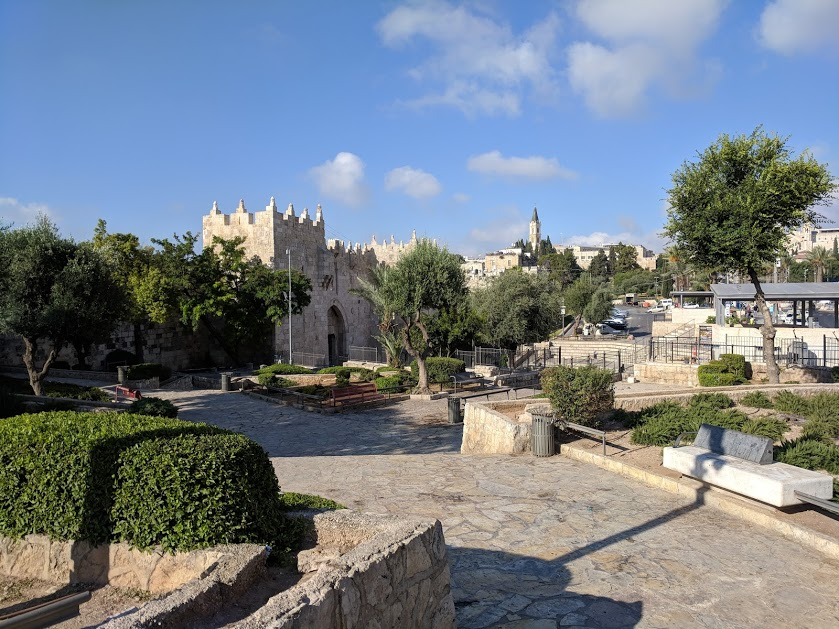 |
| Approaching the Damascus Gate |
Where an old Roman gate can be seen below the entrance.
 |
| The Two Damascus Gates |
I walked through the Walls of Jerusalem National Park and passed Zedekiah’s Cave.
 |
| Zedekiah's Cave |
The walls are built on high bedrock in this area.
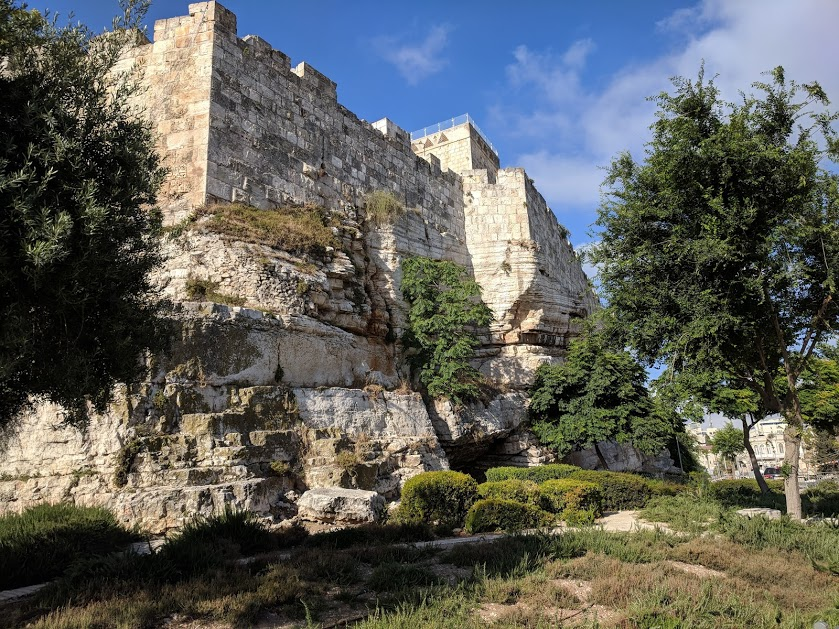 |
| Walls of Jerusalem on Bedrock |
Vendors were setting up the market at Herod’s gate (Flower Gate) as I passed.
 |
| Herod's Gate |
Then I took a walkway through an Islamic cemetery.
 |
| Mount of Olives from Islamic Cemetery |
I got a great view of Lion’s Gate from the cemetery which stood above the gate.
 |
| Stephen Gate in Jerusalem |
From there I went into the Kidron Valley,
 |
| Kindron Valley, Absalom's Tomb in the valley |
And passed the Church of St. Mary. There is a grotto here where Jesus prayed on the night he was arrested.
 |
| Grotto of the Virgin Mary |
Also an Orthodox church, which is supposedly the place where the Virgin Mary was buried. This cave is quite ornate.
 |
| Tomb of the Virgin Mary |
The Church of All Nations with its ancient Olive Trees is across the street.
 |
| Church of All Nations - Old Olive Trees |
I found a set of stairs and walked up.
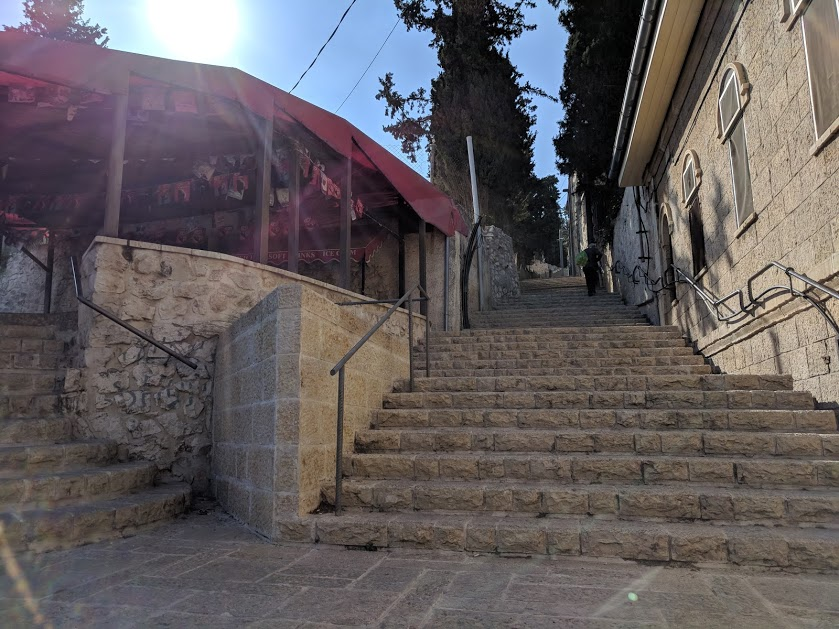 |
| Stairs leading to top of Mount of Olives |
The walk afforded great views!
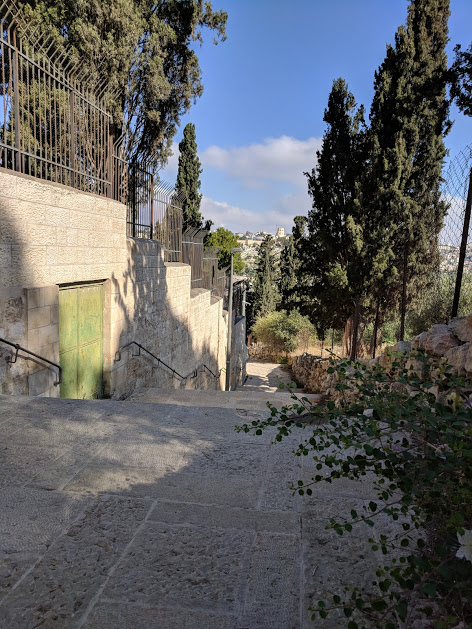 |
| View of Jerusalem from Olivet's Steps |
There was a trail through an Olive Grove where I could picture King David and Jesus walking as they traversed the Mount of Olives.
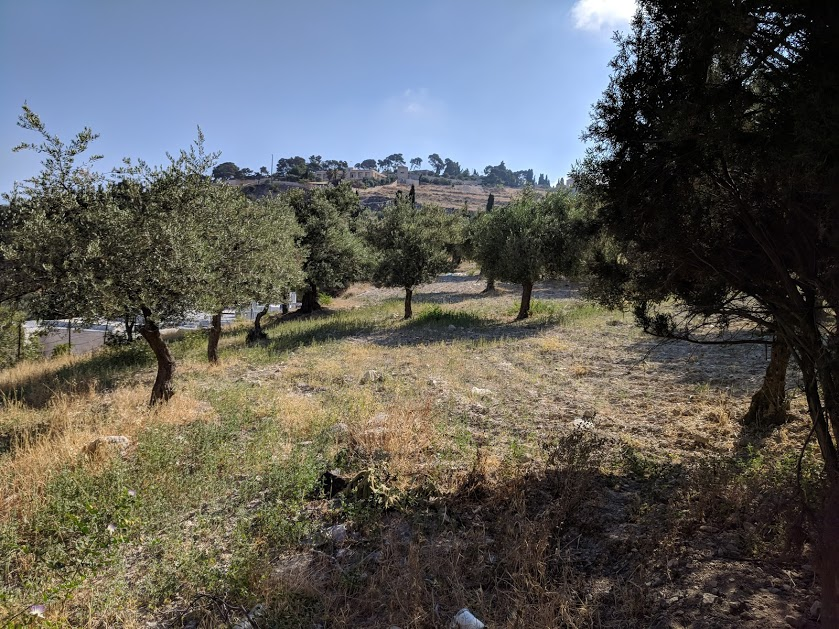 |
| Path through the Olive Orchard |
The stairs were like a road with homes along the way.
 |
| Doorway along the steps |
At the top I reached Pater Noster Church, which is reported to be a place where Jesus taught. This might have been the place he prayed on his last night.
 |
| Pater Noster Church from Entrance |
There was a 10 shekel charge to get in, and my wallet was back at the Hostel, so I looked from the entrance, and decided to come back at some time.
 |
| Mosque of the Ascension |
I walked over to the Church of the Ascension.
 |
| Dome of the Ascension |
I listened to a guide inside,
 |
| The Place where Jesus ascended to heaven - Acts 1:8 |
Who explained the footprint of Jesus left at this spot.
 |
| Heel mark can be seen on the left |
It was an interesting walk. I saw many of the tings I wrote about in my book -
Israel: Stories for Your Journey. (If you have not bought one yet, now is the time to click the link and order your copy.)


